by Ken Gargett
Those were the days.
Our focused superstar champagne this week has evoked all manner of wonderful memories. First, however, readers may recall that it was only back in 2021 that we featured the very first release by Piper Heidsieck from their Hors-Serie collection, the spectacular 1971. So when my friends at Piper enquired if I’d be interested in tasting the second release, I could not have been more excited. Turns out I could be more excited because I learned that it was from the brilliant 1982 vintage.
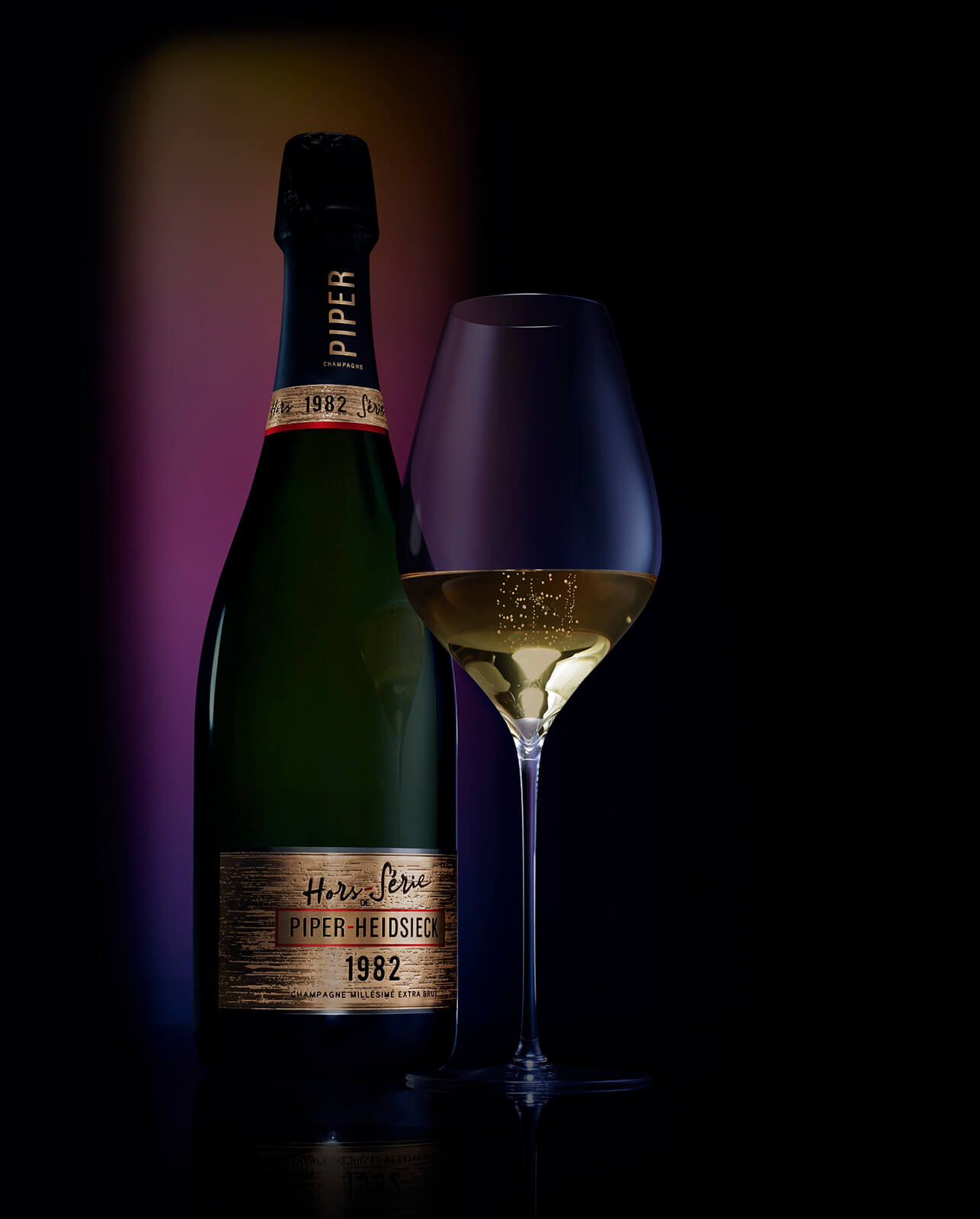
Piper Heidsieck Hors-Serie 1982 champagne
1982 is a legendary vintage for Champagne, as it was for regions like Bordeaux. There had not been much to excite champagne lovers for some time. 1975 has long been a huge favorite of mine, possibly because friends stocked up with truckloads of the 1975 Pol Roger and it was this champagne that flicked the switch for me. These days, the 1976 vintage gets more love, but for me, the finesse and class of ’75 exceed the richness and broadness of ’76. 1979 has mixed support with some loving it and others less so. 1980 was a very long-lived vintage, but few houses declared it. 1981 was another which saw very few declarations – Louis Roederer released a superb example of their Cristal, but otherwise, thin on the ground.
So when 1982 arrived, there was much rejoicing and relief. It was the largest vintage on record at that stage and a high quality one. Warm and dry, the ripeness reached an impressive 9.5% potential alcohol before fermentation. Émilien Boutillat, Piper’s young chef de cave, recently told us that it reminded him of 2022, which is exciting stuff.

Piper Heidsieck vineyards in Champagne, France
Back in the day, champagne lovers, of which I was a very young though excitable one, stocked up on the vintage. I remember, in late 1989, picking up a dozen of the 1982 Piper Heidsieck for the outrageous amount of $29.95 a bottle, sadly all are long gone. As I said, those were the days.
Back then, I kept endless and extremely detailed notes on any and every wine I purchased and/or drank. This included copying down reviews from anyone who published one. It all got a bit much not long after I purchased these – and it was all a bit OCD at the time – but after digging through endless boxes, I finally found the old folders. Although none of the dozen remain today, it all made for some interesting reading. Those recorded all drank beautifully. But it was the experts’ reviews that were most interesting.
These days, a score of 14/20 or 86/100 from a critic would be pretty much the kiss of death. Yet this wine got both, the first from Clive Coates in his ‘Vine’ and the second, from the Wine Spectator magazine, and very positive comments to accompany the scores. In the case of Coates, the comments were positive, as they were from the Spectator, and the wine topped or equaled other 1982 champagnes such as Louis Roederer, Mumm, Ayala and Deutz. Clearly, 14/20 back then meant something very different. With the Spectator, this wine topped or equaled the scores given to such wonderful 1982 champagnes as Veuve Clicquot, Gosset’s Grand Millésime and Pol Roger (I drank more than enough ‘82 Pol to know that any wine that is compared to it gets the thumbs up from me).
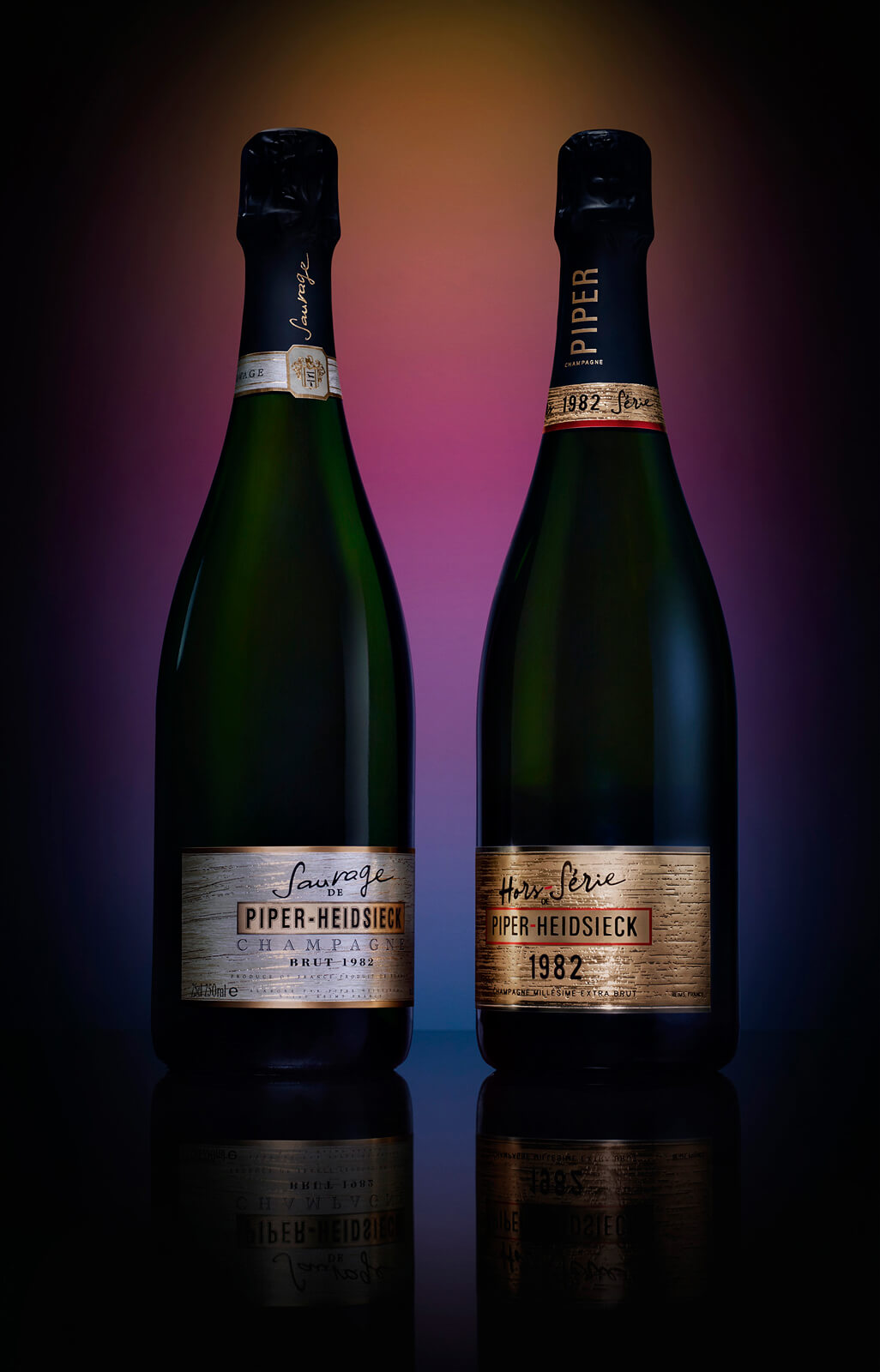
Piper Heidsieck 1982 Sauvage (left) and Hors-Serie 1982 champagnes
Those were indeed, different times. Doubt me? Let me digress by referring to my old notes and a day in the early 1990s that saw two of my 1982 Piper Heidsiecks meet their demise – for a good cause. I had taken them to a friend’s birthday lunch, to be used only as back-up as he traditionally supplied the wines. As very much the youngest in attendance, and extremely fortunate to have been included by our most generous host, I felt that I had to make some sort of contribution. Needless to say, a bottle was opened immediately.
It joined the other champagnes of the day, Louis Roederer Cristal 1981 and Taittinger Comte 1983. The whites, for nine of us, included a Dauvissat Les Presus 1983 and a Leflaive Chevalier Montrachet 1981. A set of 1966 Bordeaux – Latour, Lafite, Haut Brion and the star, Petrus. A couple of Burgundies, 1980 DRC Richebourg and one of the picks of the day, the Leroy Chambertin 1969. A 1976 Yquem followed, and then two spectacular Vintage Ports, 1948 Taylors and 1924 Grahams. An extraordinary day and yes, I was an incredibly fortunate young bloke to be blessed with such generous friends back in the day (and since).
Perhaps I had better stamina back then as three of us then went on to dinner where we opened another 1982 Piper Heidsieck, which again drank beautifully, along with a second Cristal 1981, before a 1990 Coldstream Hills Reserve Chardonnay (records don’t reflect how that drank but to get a mention, it must have held its own) and finally, a bottle of DRC Romanee-Conti 1978, although sadly this was not in absolute peak condition. Still, not a bad day and the Piper Heidsieck 1982 certainly held its own in such company. Yes, those were the days.

Piper Heidsieck pinot noir grapes ready for pressing
Nothing highlights just how different those times were than the cost of those wines. They or their equivalent today would make such an occasion effectively prohibitive. Going through some old documentation recently, I came across a receipt from an auction house for a bottle of 1983 DRC Romanee-Conti, from the early ‘90s. The bottle cost $110, not insubstantial for a bottle of wine back then, but in hindsight, a bargain of Manhattan-for-beads standards. Checking Winesearcher, an excellent source of pricing around the globe, the average price of that bottle today, ex-tax, is pushing A$30,000.
Sounds insane, but it shows why wine lovers of years gone by were able to drink at levels beyond what we can only dream of today. Anyone thinking of establishing their own cellar today, of comparable quality, the latest release available is the 2019 (2020 is just hitting the market). If you could get hold of a bottle, and that is virtually impossible given the demand, it would be a little short of A$50,000, give or take. The wines are not that expensive on release from the domaines, but skyrocket as soon as they hit the market. But I digress.
The 1982 I purchased in late ‘80s was a very different wine to this latest release in many respects. To start, the original wine for this project was their 1982 Sauvage, not the straight vintage 1982.
They had developed the Sauvage with the 1979 vintage, which had absolutely zero dosage, very rare in those days, and subsequently released a Sauvage from 1982, 1985 and 1988. The ‘Sauvage’ concept was resurrected as the Piper-Heidsieck ‘Essentiel’ in 2013. Originally, the genesis of Sauvage was a conversation between polo-playing friends, François d’Aulan, owner of Piper-Heidsieck at the time, and Claude Terrail, who owned the famous Parisian restaurant, La Tour d’Argent. Terrail loved the style of lightly dosed Brut champagnes. dÁulan took it on board and Sauvage was the result.
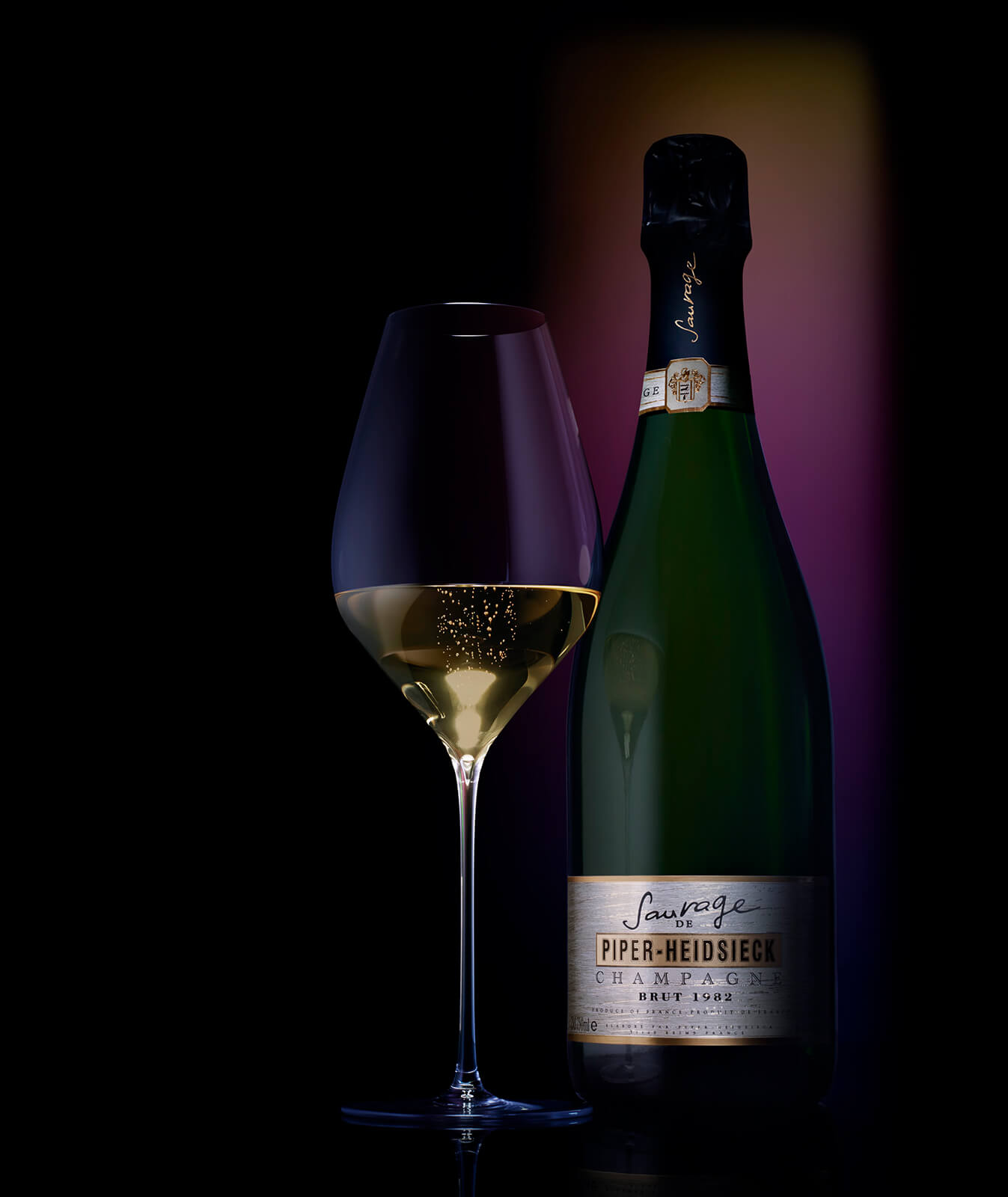
Piper Heidsieck 1982 Sauvage champagne
The Piper Heidsieck 1982 Sauvage had a dosage of four grams/liter, very low for the day. Zero dosage had proved a little too much for the time. The vintage 1982 was closer to ten grams/liter, a little higher than we see today.
Piper Heidsieck released two bottles in this latest incarnation. The Hors-Serie from 1982 which is the Sauvage 1982 with an extra 39 years on lees before being disgorged in January 2022, and the Sauvage itself, which was originally disgorged in 1992 and has been kept on cork in their cellars ever since. It is a unique opportunity for champagne lovers to compare the two styles of aging and how the wines have developed. We’ll get to that.
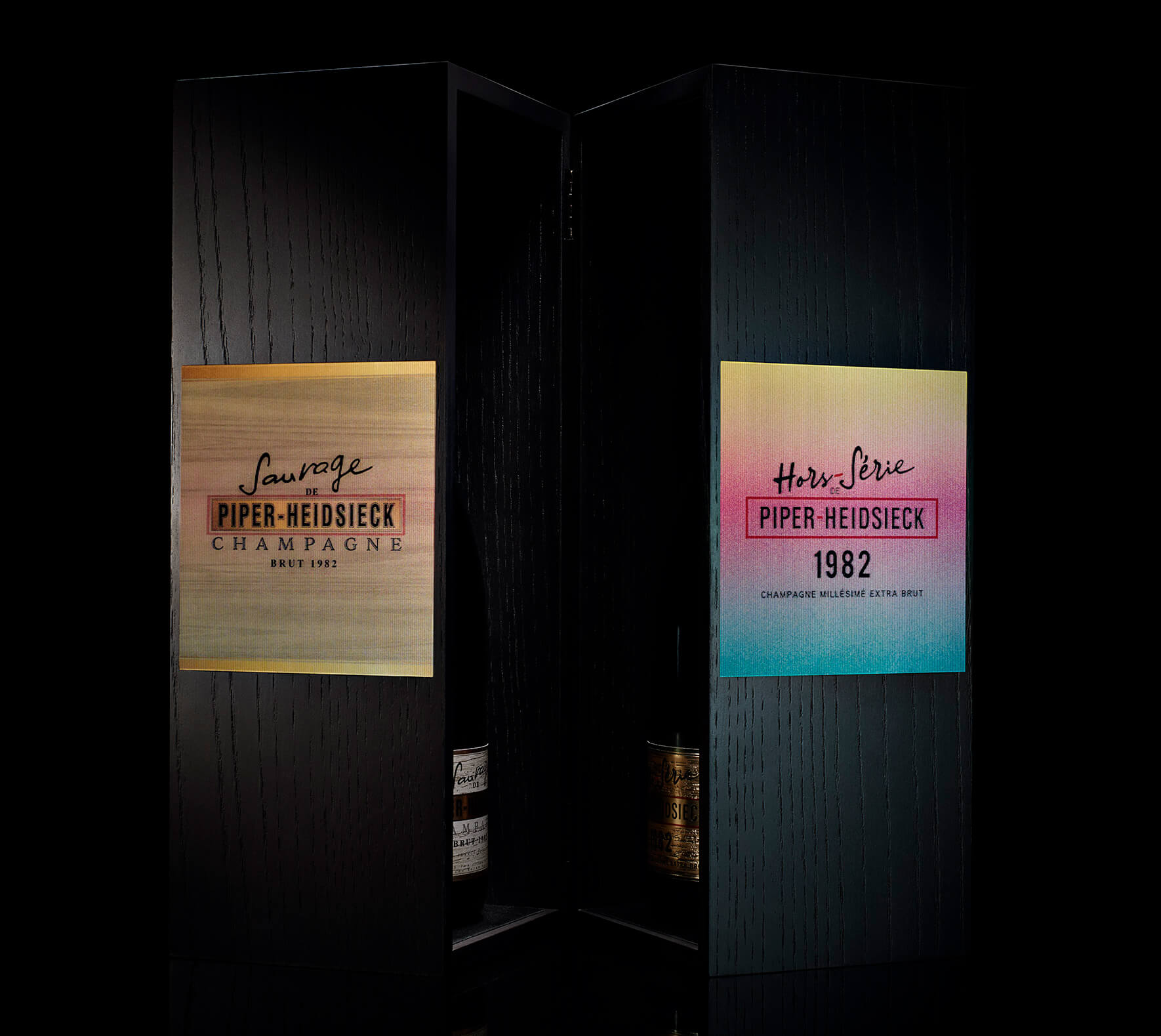
Piper Heidsieck a two-bottle set with Hors-Serie 1982 and 1982 Sauvage champagnes
Piper Heidsieck released 2,500 bottles of the 1982 Hors-Serie (around AUD$950 to $1,000 each – my dozen at $30 a bottle is looking pretty good now!) and also a two-bottle set which consists of one of the 1982 Hors-Serie and one of the 1982 Sauvage which was kept on cork (the pair are AUD$2,800). The 1982 Sauvage is not being sold separately. Both offerings come in beautifully crafted numbered wooden boxes.
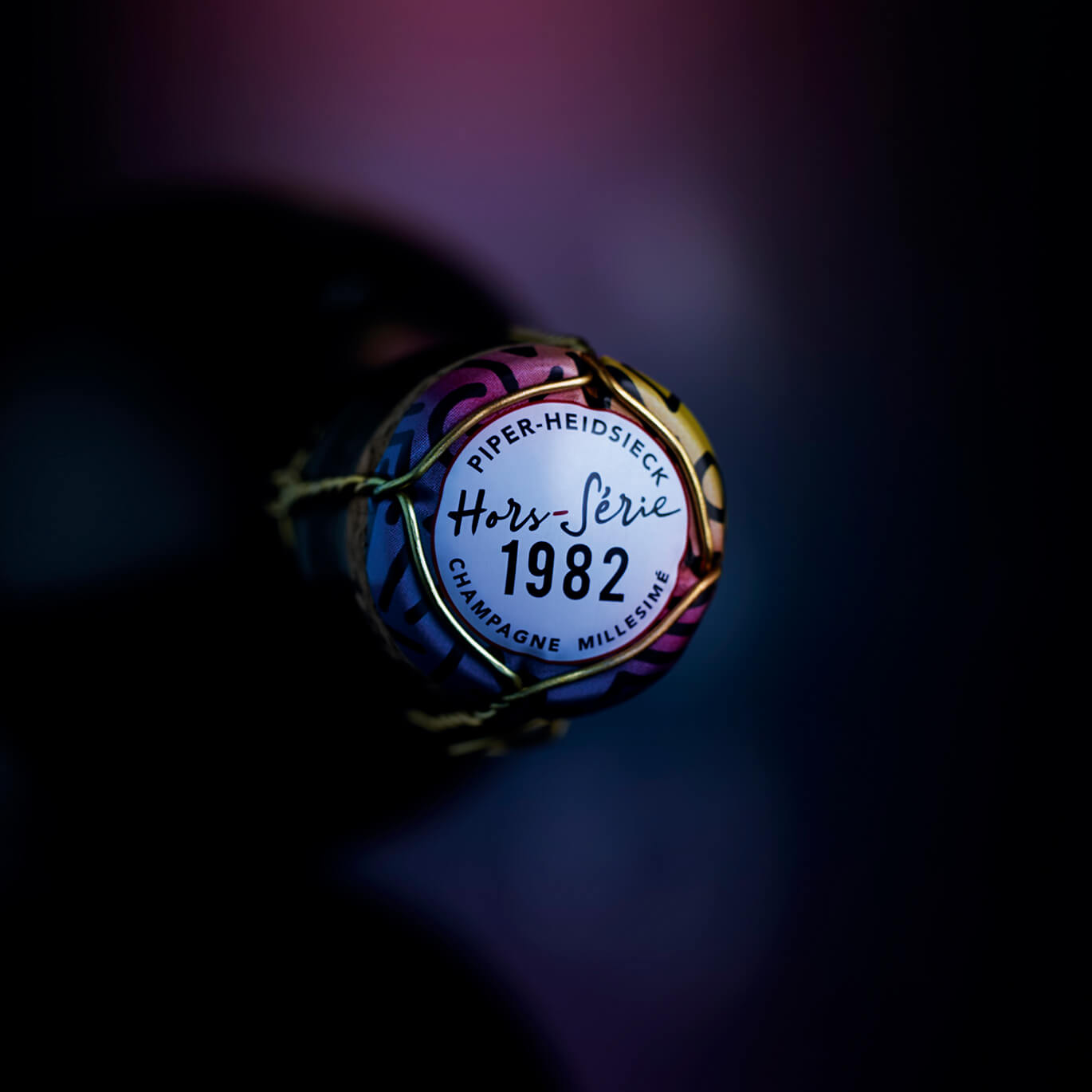
Muselet (wire cage) of the Piper Heidsieck Hors-Serie 1982 champagne
The muselet was based the urban art of the early 80s. Not sure that is as successful as the presentation boxes.
The dosage for the Hors-Serie was created from magnums of the 1982 vintage and was kept to four grams/liter, reflecting the original bottling. The wine is a blend of 60% Pinot Noir and 40% Chardonnay, with the fruit mostly sourced from Grand Cru vineyards in the Montagne de Reims, as well as some Chardonnay from Avize in the Côte des Blancs. The wine saw no malolactic fermentation, as was usual with Piper Heidsieck at the time. It was only in 1989, with the arrival of legendary chef de cave, Daniel Thibault, that any malo took place at this house.
As he did with the 1971, Émilien tasted every single bottle at disgorgement to ensure that any not up to his requirements were culled. Most were fine, but a few had some oxidation and were removed. With the 1971, Émilien noted that the wine took five different paths. He found much more consistency across the board with the 1982. He believes that is because the ’82 saw a little less time on lees (even if that was an amazing four decades, give or take) and because of improvements in technology.

Piper Heidsieck 1982 Sauvage champagne
I would love to provide you with a comparison of the two 1982 newly released champagnes, Hors-Serie and Sauvage, but unfortunately, my tasting extended only to the Hors-Serie. Those with whom I have spoken who have tasted both suggest that the Sauvage is a more ample, riper and richer style, but both wines impressed.

Piper Heidsieck Hors-Serie 1982 champagne
The 1982 Hors-Serie is superb champagne. Golden in color, mine had minimal bead – hardly a surprise at this age – and had similarities to a great aged white Burgundies. Others discussed the freshness of their bottles. Certainly, there was some seriously impressive freshness here, but I suspect not quite to the extent enjoyed by others. I have no issue with this.
At this age, some variation is inevitable and to be expected, but more importantly, the wine itself was complex, mature and a glorious drink. Stewed apple notes, yellow plums, coffee beans, stonefruits, peaches, orange rind and even a hint of ginger. A touch of honey towards the finish and a luscious texture. This is sensational champagne. There is no rush to drink it. The wine should continue to age well over the next decade, but that said, there is no reason not to enjoy it now. For me, 96.
We had a discussion as to just what should be served with the champagne. A mature cheese like Comte would be perfect. A richer seafood dish would also be special. For me, a great cigar seemed ideal and subsequent research that evening with the remains of the bottle proved it to be so.
For more information, please visit www.piper-heidsieck.com/en/HorsS%C3%A9rie1982
You might also enjoy:
Piper-Heidsieck Launches Hors-Série 1971 Champagne: An Incredible 48 Years On Lees!
Gosset Celebris 2008 Champagne: History And Tasting Notes
Tips For The Wines And Vintages To Buy In 2023
Yamazaki 12-Year-Old Japanese Whisky: Why Pricing Has Gone Through The Roof





















































Leave a Reply
Want to join the discussion?Feel free to contribute!